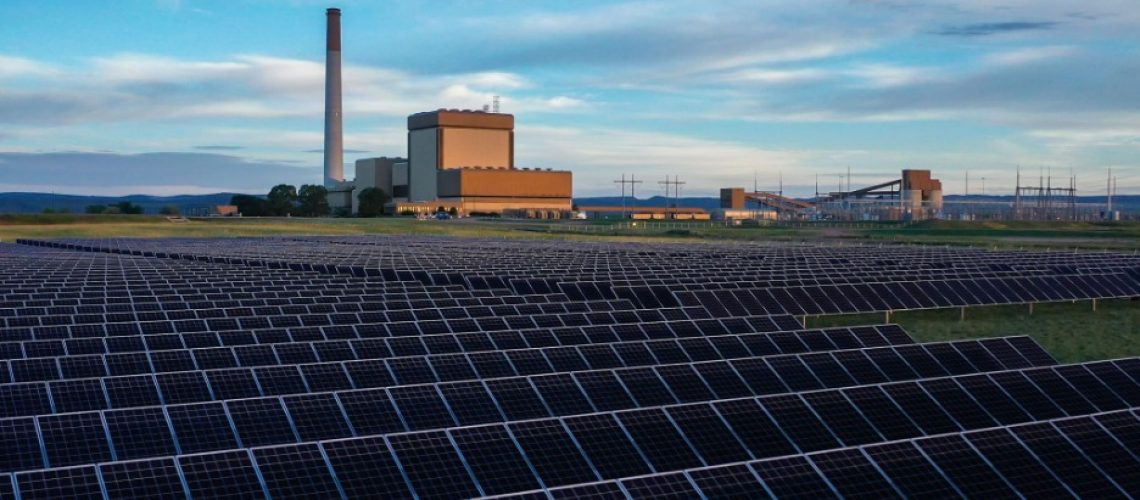Guest Post by Ben Platt, 2023-2024 Sustainability Leadership Fellow, and Ph.D. Student in the Department of Mechanical Engineering at Colorado State University
There is a renewable energy revolution happening all over the world: costs for renewable energy have dropped significantly in the last 10 years and the world is starting to adopt the technology at a very fast pace. In 2022, the installed capacity of wind and solar power grew almost 10% in the United States [1]. In Colorado, renewable energy generating capacity has more than quadrupled since 2010 [2]. These statistics are extremely encouraging and are critical steps in the transition to a clean energy system.
However, there is a big piece of this puzzle that is missing. On the other end of the electric grid, advanced technologies can help reduce the amount of energy that is required for basic services like lighting, heating, and cooling. Utilization of these efficiency technologies severely lags the adoption of renewable energy. The average electricity consumption per household in the US in 2009 was 11,320 kWh per year [3]. In 2020, this number was 10,566 kWh per year [4]- representing a mere 7% improvement in energy efficiency in more than 10 years.
Efficiency technologies can often be a more effective use of resources than renewable energy projects. Let’s look at an example to illustrate this: upgrading a traditional 60-watt incandescent lightbulb to an LED equivalent reduces the power consumption of the bulb by about 50 watts [5]. If this bulb is used for about four hours a day, energy consumption will be reduced by about 200 watt-hours or 0.2 kWh each day. Producing this same 0.2 kWh with solar would require 25 watts of solar panels (assuming 8 hours of useable sun each day). In Colorado, residential solar currently costs about $3.42 per watt [6], so the 25 watts would cost $85.50. The LED lightbulb costs less than $1.50 [5] – less than 2% of the solar panels.
Another aspect to consider is the fact that efficiency technologies can also make renewable energy more accessible. Continuing with the lightbulb example, we can compare the cost to power a standard bulb with renewable energy against the cost to power the equivalent LED bulb. Using the same use and sunlight assumptions as above, the standard lightbulb would consume 0.24 kWh per day. It would cost $102.60 to install enough solar panels to power this lightbulb. The LEB bulb on the other hand only consumes 0.04 kWh per day. This would cost $17.10 to power with solar – reducing the cost of renewable energy by over 80%.
All of this is not to say that renewable energy is a bad thing. Renewables have a critical role to play in greening our electric grid. The point here is that if we care about reducing carbon emissions and energy costs, efficiency upgrades can often be the easiest and most cost-effective way to make a meaningful difference.
While the LED lighting upgrade is potentially the most dramatic example, this trend holds true for a host of other efficiency solutions. Smart thermostats, efficient appliances, HVAC improvements, and insulation upgrades among other technologies also have the potential to dramatically cut energy consumption. These lower-cost options can be a more cost-effective solution than renewable energy. The cheapest and cleanest energy is the energy that isn’t needed at all.

So, I encourage us all to look for opportunities to improve how efficiently we use energy in our daily lives. Anything from retrofitting your insulation, to installing a smart thermostat, to simply turning some lights off more often can really make a difference. These things can all definitely save you money on your next utility bill and will make a bigger impact when it comes to mitigating climate change than you might think.
If you’re interested in learning more, here are some great places to get started:
- An interesting article on a similar topic from COP26
- Videos from the IEA on the global impacts of energy efficiency
- A great list of efficiency tips from HomeAdvisor
- A cool energy dashboard from EIA – compare your energy use with state and national averages.
References:
[1] U.S. Energy Information Administration. Today in Energy. Eia.gov 2023.
[2] U.S. Energy Information Administration. Colorado State Energy Profile. Eia.gov 2023.
[3] U.S. Energy Information Administration. Residential Energy Consumption Survey (RECS). Eia.gov 2009.
[4] U.S. Energy Information Administration. Residential Energy Consumption Survey (RECS) Dashboard. Eia.gov 2020.
[5] GE Daylight 60 Watt Replacement LED Light Bulbs. Amazon.com 2023.
[6] EnergySage. Colorado Solar Panel Cost: Is Solar Worth It In 2023? EnergySage 2023.






